JEST BENS
Редактор
- Регистрация
- 07.06.22
- Сообщения
- 1,549
- Реакции
- 0
Despite challenges from Apple iOS updates over the past year, Facebook* continues to be a lucrative platform for brands to reach, engage, and convert customers. Just how lucrative? Well, for starters, it’s the cheapest social media advertising channel (apart from Twitter, whose popularity pales in comparison).
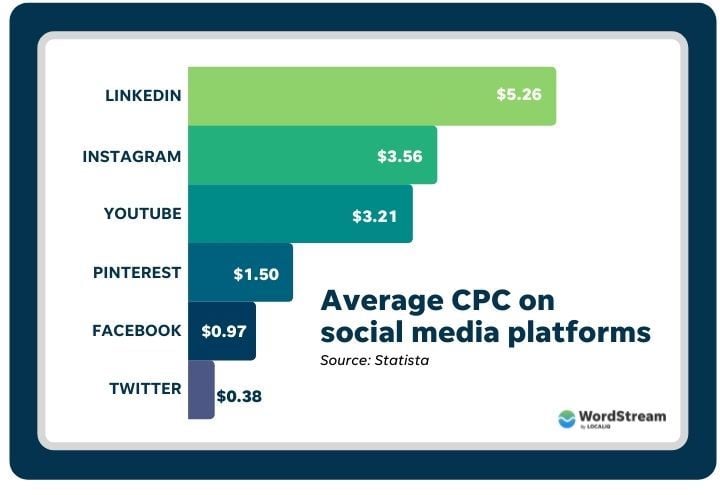
But to officially answer that question, we’re going to dive into how much Facebook* ads cost in 2022 based on the latest data available, as well as how to keep your costs as low as possible.
Facebook* ads average cost per click in 2022 is:
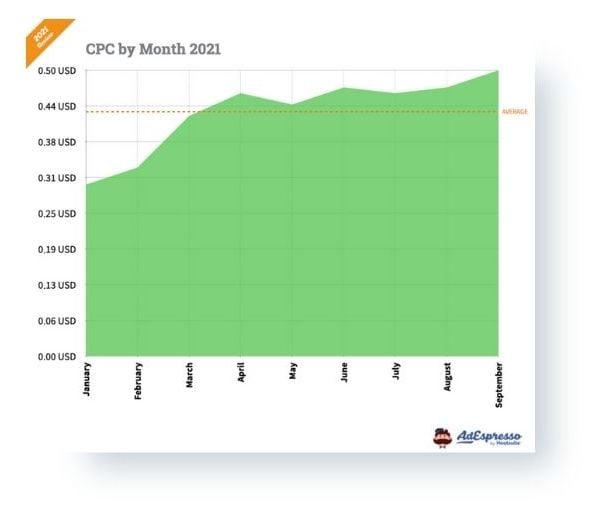
AdEspresso’s month-by-month breakdown for Facebook* ads cost per click from Q1 to Q3 of 2021 is as follows:
Facebook* ads cost per click by month:
Facebook* ads cost per click by region

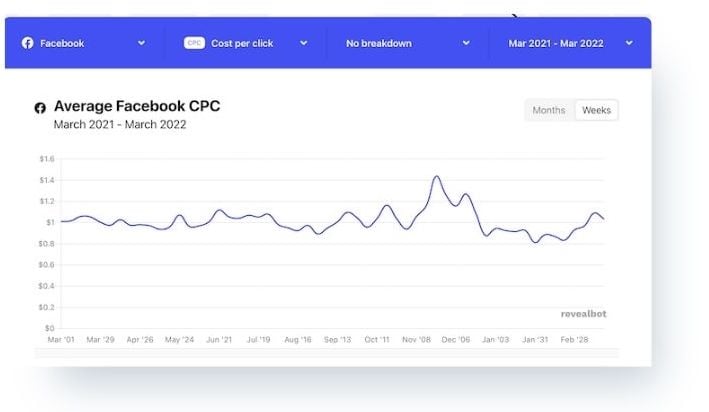
We can also see average cost per click in Facebook* by campaign objective:
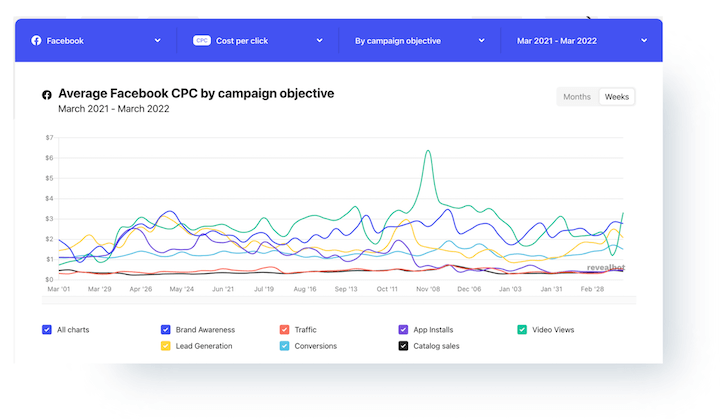
Our data showed an average cost per click (CPC) on Facebook* Ads of $1.68 across all industries, with food and drink the cheapest at $0.42 and finance the most expensive at $3.89.
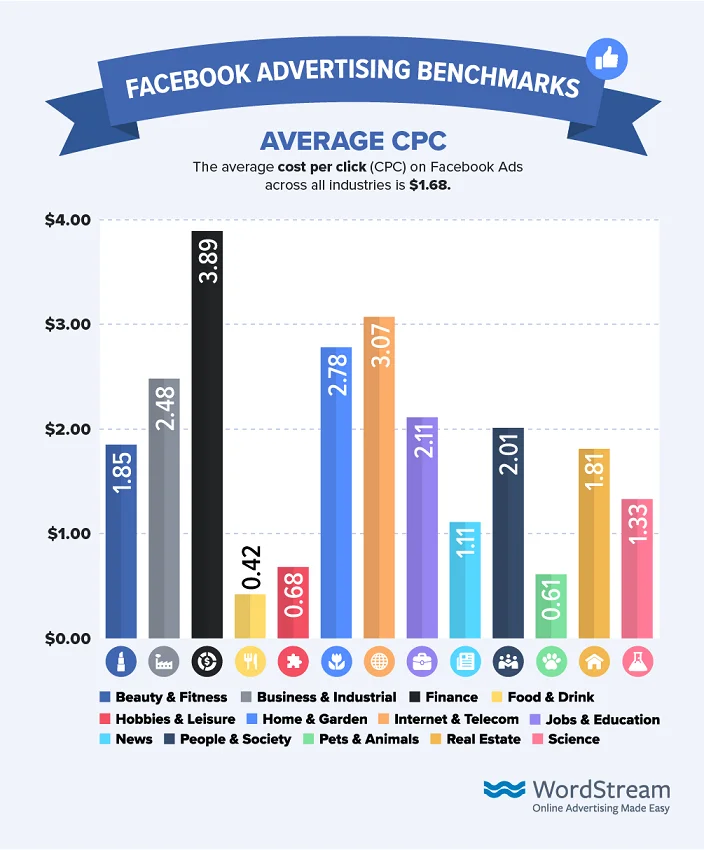
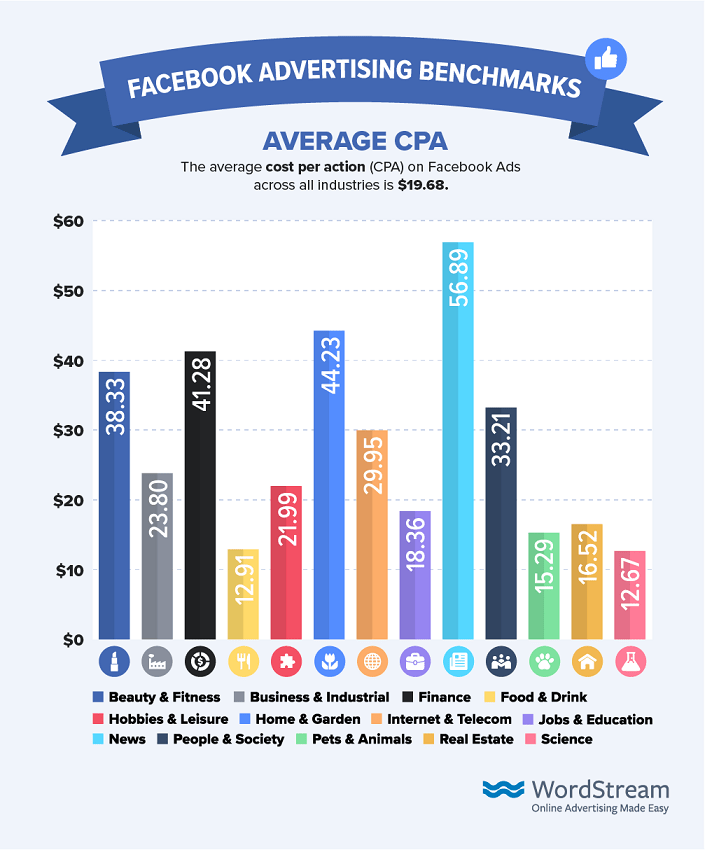
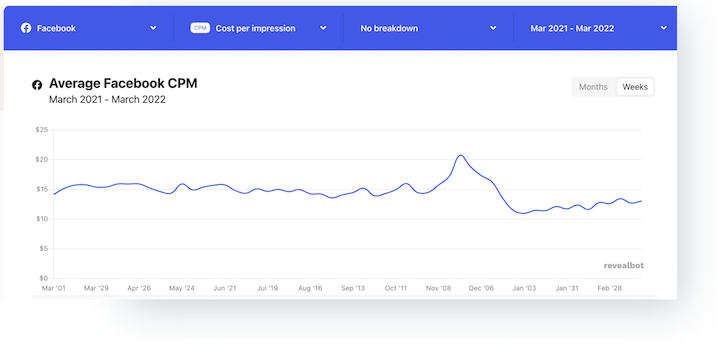
When you break the averages out by campaign, you see CPMs ranging from $2.28 (brand awareness campaigns in February) all the way up to $30.97 (lead generation campaigns in June).
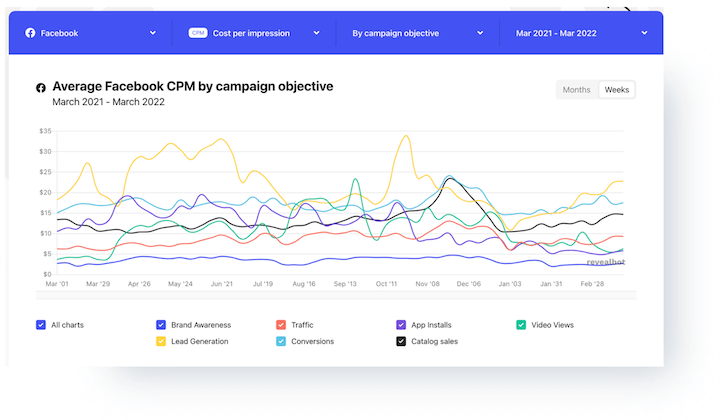
If your CPMs are high, check out our post on how to lower your Facebook ads CPM.
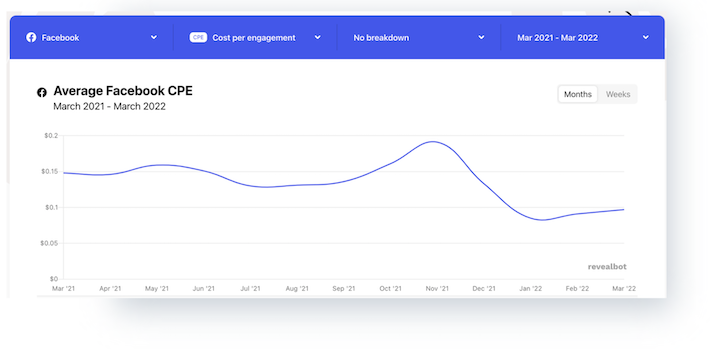
When average cost per engagement is broken out by campaign objective, we see CPEs ranging from practically a penny to $0.58.

For example, Brand awareness or Engagement campaigns will cost less than lower-funnel campaigns like Conversions that drive purchases. It’s easier to get someone to engage with an ad than it is to entice them to click through, open up their wallet, and complete a purchase.
You will typically see lower costs in prospecting, upper-funnel, cold-audience campaigns compared to retargeting, lower-funnel, warmer-audience campaigns, because the audiences of the latter tend to be more specific, smaller in size, therefore more competitive.

A healthy Facebook* CTR is about 2%. More often than not, the higher your CTR climbs, the lower your CPCs will be.
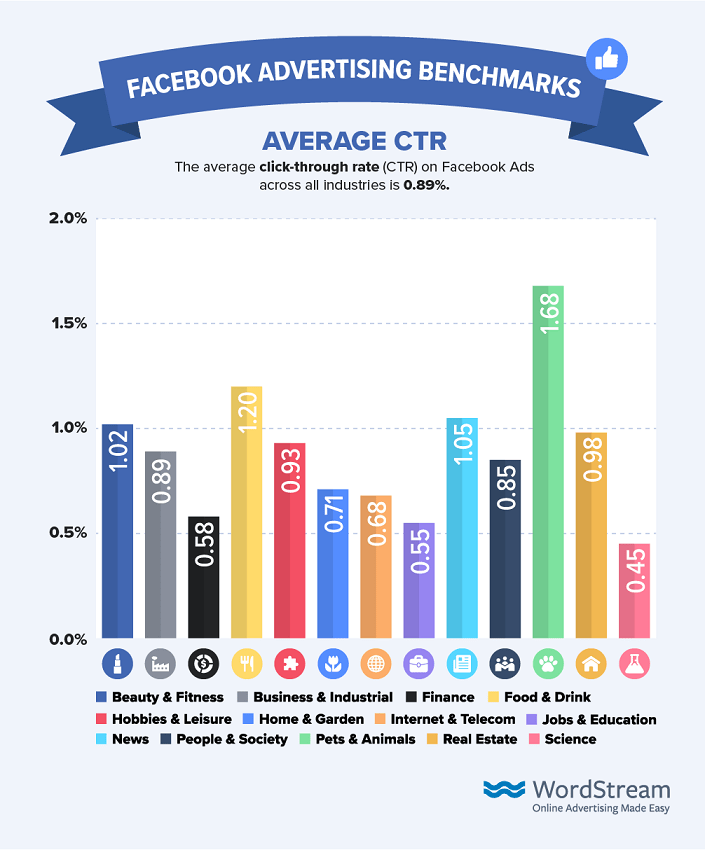
It’s also important to look at the ROI by industry. For example, the average CPA for restaurants is $12.91. But if your customer spends $50 and keeps coming back for years to come, you’re essentially making money off of that ad.
In AdEspresso’s chart (also shown above), we can see the increase in costs from Q1 to Q4.

Keep that in mind as you budget for the year and if you aren’t in ecommerce or running promotions during the end of the year, you may want to strategize on whether to keep a presence or to scale back.
In short, begin with upper-funnel campaigns to reach more people in your target audience at a lower cost, and then move your way toward conversion campaigns that optimize for your purchase-driving conversion events.

Learn how to create a full-funnel Facebook* advertising strategy here.
Note that some brands can certainly run a Conversion campaign targeting upper-funnel audiences with lower priced products or something that may make for a good impulse buy.
People can and do make purchases upon first interaction with a brand on Facebook*, however, most will need more touch points from a brand so you can gain their trust, showcase your benefits, and entice them to convert.
By appearing on all placements, Facebook* can get a better idea on where to best serve your ads, thus lowering your costs. You’ll also get out of the learning period faster so that you can apply data-informed money-saving optimizations as soon as possible.
Your targeting conditions will remain the same regardless of placement, which means Facebook* can then serve ads to user in a lower volume, but lower cost placement that can help drive incremental revenue for you.

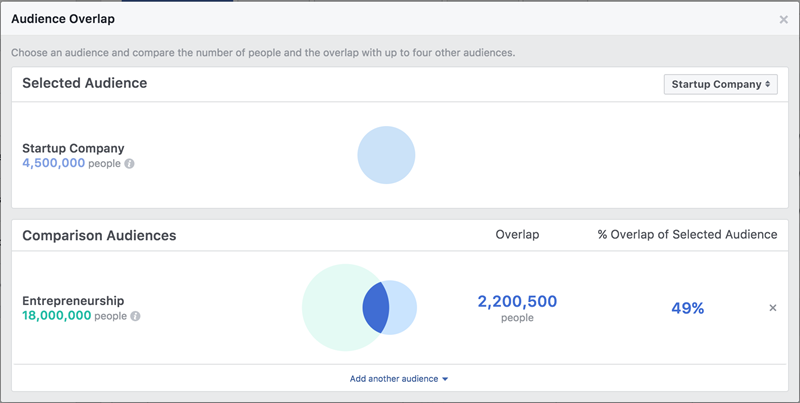
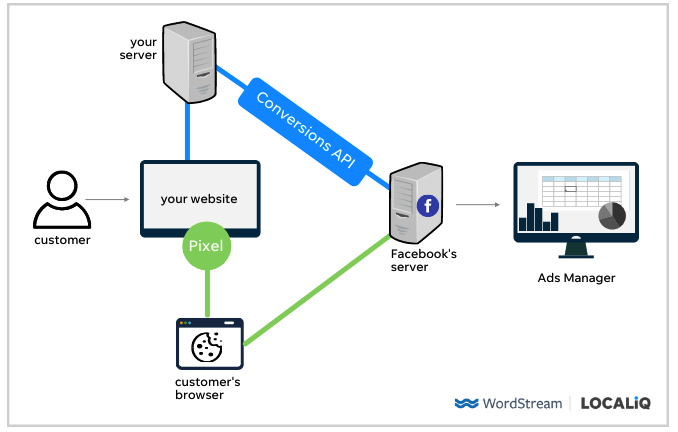
The Facebook* Pixel is still a thing, but it is losing its power since it’s cookie-based and cookies are crumbling. The Facebook* Conversions API does not rely on cookies, but it doesn’t pick up the same exact information as the pixel. So, using the two together will ensure you capture the most accurate data. You can learn how to use the Facebook* Conversions API here.
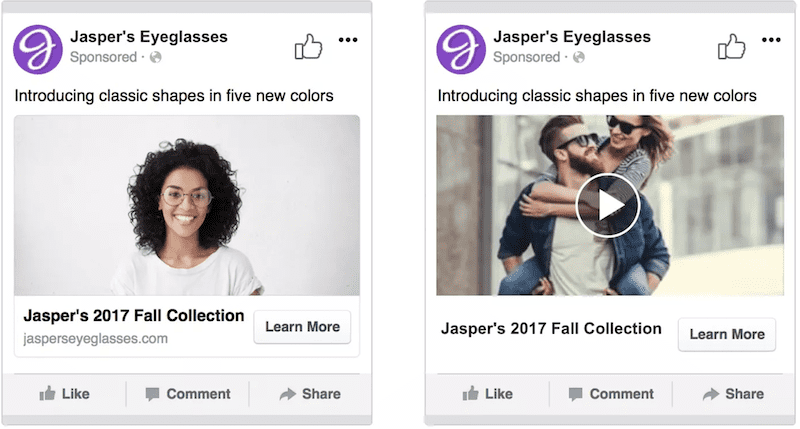
Facebook* is not the set-it-and-forget type of platform, so it is best to continuously test and aim for better results. Running tests at the ad level can help improve your engagement rates and CTR and stretch your budget further. Check out our Facebook* ad examples to get ideas and inspiration.
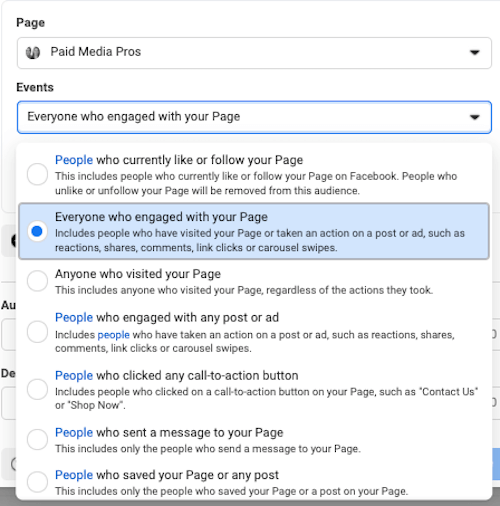

Image source


Image source
Though we have faced some targeting limitations as a result of Apple iOS updates, Facebook* still remains one of the best PPC channels for targeted advertising. This does require changes, however, so be sure to visit our guide >> Facebook* Ad Targeting in 2022.
For context, here are is average cost per click for each of the four major social media advertising platforms:

Data source

But to officially answer that question, we’re going to dive into how much Facebook* ads cost in 2022 based on the latest data available, as well as how to keep your costs as low as possible.
How much do Facebook* Ads cost in 2022?
We’ll be diving into different reports to get specific answers, but here’s the overview.Facebook* ads average cost per click in 2022 is:
- Ad Espresso: $0.30 – $0.50
- Emplifi: $0.40 to $0.65
- Revealbot: $0.43 – $2.32
- WordStream: $0.42 – $3.89 (Conversions objective campaigns)
Facebook* ads cost per click by month, 2022
Ad Espresso’s Facebook* benchmarks report provides average cost per click and cost per like, broken down by month, day, and hour. According to this report, the average cost per click for Facebook* ads across all industries is $0.44, slightly more expensive than last year which was $0.38.
AdEspresso’s month-by-month breakdown for Facebook* ads cost per click from Q1 to Q3 of 2021 is as follows:
Facebook* ads cost per click by month:
- January – $0.30
- February – $0.33
- March – $0.42
- April – $0.46
- May – $0.44
- June – $0.47
- July – $0.46
- August – $0.47
- September – $0.5
Facebook* ads cost per click by region, 2022
Emplifi’s State of Social Media and CX provides global Facebook* ad benchmark data from Q2 2020 to Q2 2021. According to its data, the cost per click in Facebook* ads for North America ranged from $0.40 to $0.65 last year. Here are the averages compared to other regions of the world, in order from highest to lowest:Facebook* ads cost per click by region
- North America: $0.40 – $0.65
- Western Europe: $0.30 – $0.50
- East Asia: $0.18 – $0.20
- Southern Europe: $0.11 – $0.21
- Worldwide: $0.12 – $0.19
- South America: $0.05 – $.10
- Central America: $0.05 – $.10
- Southeast Asia: $0.05 - $.10

Facebook* ads cost per click by campaign type, 2022
Revealbot provides real-time benchmark costs. According to its data, the average cost per click across all campaigns over the past year is $1.01, a slight increase from last year at $0.97.
We can also see average cost per click in Facebook* by campaign objective:
- Brand awareness: $2,32
- Lead gen: $1.74
- Traffic: $0.43
- Conversions: $1.33

Facebook* ads cost per click by industry
The latest industry benchmarks we could find on Facebook* ad costs were our own, collected in 2019.Our data showed an average cost per click (CPC) on Facebook* Ads of $1.68 across all industries, with food and drink the cheapest at $0.42 and finance the most expensive at $3.89.

| Industry | Average CPC |
| Beauty & Fitness | $1.85 |
| Business & Industrial | $2.48 |
| Finance | $3.89 |
| Food & Drink | $0.42 |
| Hobbies & Leisure | $0.68 |
| Home & Garden | $2.78 |
| Internet & Telecom | $3.07 |
| Jobs & Education | $2.11 |
| News | $1.11 |
| People & Society | $2.01 |
| Pets & Animals | $0.61 |
| Real Estate | $1.81 |
| Science | $1.33 |
Facebook* ads cost per lead by industry
According to our benchmark data, the average cost per lead in Facebook* ads across all industries is $19.68, ranging from $12.91 for food and drink to $56.89 for news.
| Industry | Average CPA |
| Beauty & Fitness | $38.33 |
| Business & Industrial | $23.80 |
| Finance | $41.28 |
| Food & Drink | $12.91 |
| Hobbies & Leisure | $21.99 |
| Home & Garden | $44.23 |
| Internet & Telecom | $29.95 |
| Jobs & Education | $18.36 |
| News | $56.89 |
| People & Society | $33.21 |
| Pets & Animals | $15.29 |
| Real Estate | $16.52 |
| Science | $12.67 |
Facebook* ads CPM 2022
According to Revealbot, the average CPM on Facebook* across all industries is $14.40, higher than last year which was $11.54.
When you break the averages out by campaign, you see CPMs ranging from $2.28 (brand awareness campaigns in February) all the way up to $30.97 (lead generation campaigns in June).

If your CPMs are high, check out our post on how to lower your Facebook ads CPM.
Facebook ads cost per engagement, 2022
Also according to Revealbot, the average Facebook cost per engagement in 2022 is $0.12, one cent higher than last year.
When average cost per engagement is broken out by campaign objective, we see CPEs ranging from practically a penny to $0.58.

Factors that influence the cost of Facebook* ads
Just like Instagram ads costs, Facebook* ad costs are influenced by a number of variables.1. Campaign objectives
Facebook* campaign objectives are a prominent factor in pricing since they relate to the value of the desired goal and where in the funnel your users are.For example, Brand awareness or Engagement campaigns will cost less than lower-funnel campaigns like Conversions that drive purchases. It’s easier to get someone to engage with an ad than it is to entice them to click through, open up their wallet, and complete a purchase.
2. Audience size
Facebook* ads targeting larger and broader audiences will generally cost less than for smaller audiences.You will typically see lower costs in prospecting, upper-funnel, cold-audience campaigns compared to retargeting, lower-funnel, warmer-audience campaigns, because the audiences of the latter tend to be more specific, smaller in size, therefore more competitive.

3. Daily budget
If your daily budget is on the lower end, it may take longer for Facebook’s* algorithm to exit the Learning Phase. For this reason, costs for new ad sets are often higher up front while the system understands how your audience behaves with your ads and how to optimize them for the highest engagement. If your ads are well engaged with, Facebook* and Instagram will reward you with lower costs over time.4. Bidding strategy
Similarly, the way you instruct Facebook* to spend your ad budget affects how much your ads cost. Bidding strategies include:- Lowest cost
- Highest value
- Cost cap
- Minimum ROAS
- Manual
5. Click-through rate
Click-thru rate (CTR) can also play a role in you Facebook* ad costs. If CTR is low, especially in a website traffic campaign, you may then see higher costs as Facebook* understands that there may be some disconnect between your target audience and the messaging in your ads.A healthy Facebook* CTR is about 2%. More often than not, the higher your CTR climbs, the lower your CPCs will be.
6. Industry
As you saw in our benchmarks above, Facebook* costs vary by industry, which also includes varying click-through rates.
It’s also important to look at the ROI by industry. For example, the average CPA for restaurants is $12.91. But if your customer spends $50 and keeps coming back for years to come, you’re essentially making money off of that ad.
7. Seasonality
Historically speaking, in the latter part of Q3 and Q4, costs tend to temporarily increase as the advertising landscape changes for the holiday ecommerce season. Competition ramps up as brands increase their budgets and gain more impression share, thus, increasing costs for all advertising brands.In AdEspresso’s chart (also shown above), we can see the increase in costs from Q1 to Q4.

Keep that in mind as you budget for the year and if you aren’t in ecommerce or running promotions during the end of the year, you may want to strategize on whether to keep a presence or to scale back.
How to lower Facebook* ad costs
There are a number of ways to lower your Facebook* ad costs, but here are some of our favorite strategies.1. Create a full-funnel strategy
To use your budget wisely, choose funnel-appropriate campaign objectives. In general, Awareness and Consideration campaigns are suited for the top of the funnel; Consideration and Conversion campaigns align with the middle of the funnel; and Conversion campaigns are best for bottom-funnel conversions.In short, begin with upper-funnel campaigns to reach more people in your target audience at a lower cost, and then move your way toward conversion campaigns that optimize for your purchase-driving conversion events.

Learn how to create a full-funnel Facebook* advertising strategy here.
Note that some brands can certainly run a Conversion campaign targeting upper-funnel audiences with lower priced products or something that may make for a good impulse buy.
People can and do make purchases upon first interaction with a brand on Facebook*, however, most will need more touch points from a brand so you can gain their trust, showcase your benefits, and entice them to convert.
2. Use the Automatic Placements setting
While it can be tempting to pick and choose where you want your ads to appear within the Facebook* network, the best way to save money is to start with the default Automatic Placements setting. In fact, not doing so is on our list of 7 Budget-Wasting Facebook* Ads Mistakes.By appearing on all placements, Facebook* can get a better idea on where to best serve your ads, thus lowering your costs. You’ll also get out of the learning period faster so that you can apply data-informed money-saving optimizations as soon as possible.
Your targeting conditions will remain the same regardless of placement, which means Facebook* can then serve ads to user in a lower volume, but lower cost placement that can help drive incremental revenue for you.

3. Broaden your audience
Ad mentioned above, audience size impacts how much Facebook* ads cost. So while you want to keep your targeting narrow, you should strive to make those targeted audiences as large as possible. This has become trickier as a result of privacy measures, but we’ve got some recommended Facebook* ad strategies to help you out with that.4. Check audience overlap
Facebook’s* audience overlap tool can be instrumental in saving money. Let’s say you have one ad targeting an audience of people interested in startups and another ad for people interested in entrepreneurship. You have different Facebook* ad copy and creative to appeal to these different audiences. However, the overlap tool shows you that half of the startup audience overlaps with the entrepreneurship audience. Knowing this, you can use exclusions so those ads don’t overlap. Otherwise, you’d lose money bidding against yourself.
5. Use bid caps
This is the manual bidding strategy in Facebook* ads, where you can set a maximum bid instead of allowing Facebook* to dynamically bid based on your goals. But this should be used with caution. It’s for advertisers who have a solid understanding of the conversion rate and profit margin, and requires regular maintenance. If you set your bid cap too low, Facebook* might have a hard time spending all of your budget.6. Use the Pixel and the Facebook* Conversions API
The goal of both of these pieces of technology is for you to track your ad performance. With visibility into what’s working and what’s not, you can allocate budget accordingly. You can also gain insights about the people viewing your ads, which you can use to further optimize your campaigns and maximize your budget.The Facebook* Pixel is still a thing, but it is losing its power since it’s cookie-based and cookies are crumbling. The Facebook* Conversions API does not rely on cookies, but it doesn’t pick up the same exact information as the pixel. So, using the two together will ensure you capture the most accurate data. You can learn how to use the Facebook* Conversions API here.
7. Run Facebook* A/B testing
You can also help lower your costs at the ad level by A/B testing variables in your ads—one at a time—to better understand what is and is not working well. Test out the text, headline, images and/or videos, landing pages, and more.
Facebook* is not the set-it-and-forget type of platform, so it is best to continuously test and aim for better results. Running tests at the ad level can help improve your engagement rates and CTR and stretch your budget further. Check out our Facebook* ad examples to get ideas and inspiration.
8. Target your page fans separately
These are going to be your highest converting audiences, so by separating them out, you can allocate more budget to the campaigns that will yield the highest ROI. Plus, retargeting page visitors is one of the lesser-used Facebook* ad strategies becoming more popular as a result of privacy changes.
What makes Facebook* Ads worth the price?
Advertising on social media in general has its benefits, but let’s finish off with some of the money-saving advantages Facebook* has over other platforms like Pinterest, LinkedIn, and Instagram.Facebook* is still the most popular
With 2.8 billion users worldwide, Facebook currently ranks as the largest and most popular social media platform in the world. This is compared to YouTube (2.3 billion), Instagram (1.3 billion), and TikTok (7.3 million).
Image source
…and the most widely used
Facebook* has the most even distribution of users compared to other popular social media platforms like Instagram and Linkedin—which means you can target a larger range of age groups with your ads.
Precise targeting means higher ROI
Precise targeting means reduced Facebook* ad costs. If you want to target someone in a 15-mile radius of a particular address or zip code, you can do that. If you want to reach parents with children 3-5 years old who love ice cream, you can do that too. And we haven’t even touched lookalike and custom audiences.
Image source
Though we have faced some targeting limitations as a result of Apple iOS updates, Facebook* still remains one of the best PPC channels for targeted advertising. This does require changes, however, so be sure to visit our guide >> Facebook* Ad Targeting in 2022.
You have flexibility with budgeting
Facebook* offers two types of budgeting to accommodate different advertising strategies. Lifetime budgets, which are good if you run ads on a schedule and/or a fixed budget and end date; and daily budgets, which are good for maximizing ongoing campaigns and pacing and planning around a fluctuating budget.It’s affordable
Facebook* ads are among the most cost-effective ad types for any business, whether it spends $10 a day or thousands. With testing, remarketing, and reporting capabilities, you have the tools to make the most of every dollar you spend.For context, here are is average cost per click for each of the four major social media advertising platforms:
- Twitter: $0.38
- Facebook*: $0.97
- Instagram: $3.56
- LinkedIn: $5.26

Data source



